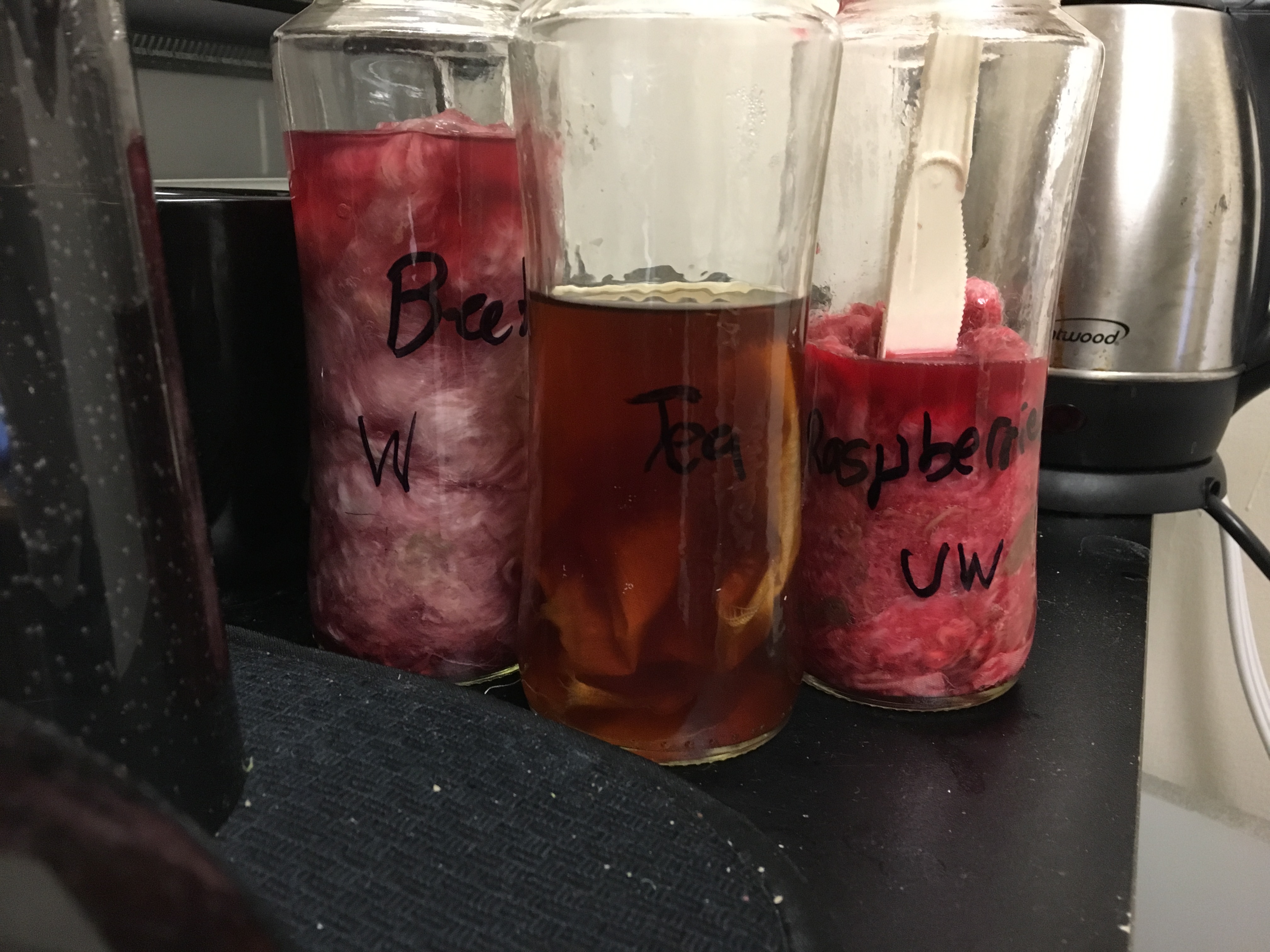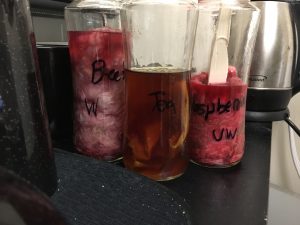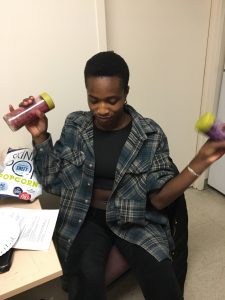Simple Dye Procedure
Beets/Berries (blueberry and raspberry)/ Black tea:
Washed sheep wool:
Unwashed sheep wool (scent):
Placing the cloth materials together with the fruits and the fixative (alum).
Result:
Cotton 1 (not washed with water) and Unwashed Wool – Beets
Cotton 2 (washed with water) – Black Tea
Cotton 3 (with fixative) and Washed Wool – Berries
Final:
Shibori Technique Dying: Black Tea
Our result for this experiment didn’t end up pretty. The color was very faint thus we couldn’t see the true effect of the black tea dying. This could be because we didn’t use enough bags of tea.
Reflections:
- We chose to use beets, blueberries and raspberries and also black tea as plant materials. We expected to have the colors of what we see in the plant materials: purple for beets, dark red for berries and brown for black tea.
- I couldn’t see a specific difference between the dyed-washed and dyed-not washed, however I thought the dyed-mordant-washed seemed a little faint in terms of color as compared to the other examples. I thought this had something to do with the acid.
- I thought that the cotton colors were much ore vibrant than the wool. I think that the colors for the wool weren’t strong enough as the wools ended up only getting spots. But if both need comparison, I would say that the washed wool received much more vibrant coloring.
- During this experiment, the water we have used touched many different materials such as: cotton (with and without mordant), washed wool (washed with kitchen soap chemicals), unwashed wool (includes natural oils deriving from the sheep), excess plant materials and their colors, the water used to dilute these colors and also the mordant (alum) we used. The mordant, which was used to darken the colors (like molecular glue), includes chemicals that are toxic to the natural dyer, however not the consumer.
- Everything that goes down our drains, meets up in sewers. All of the materials from sewers aim to go in the direction of the waste water treatment plants. The treatment plants serve the purpose of removing solids and pathogens from the waters they receive as a process for filtration. These waters are then ready to be introduced outside. The next step would be filtrating larger and smaller materials such as napkins and grit. Afterwards, this filtrated water would go to another tank in order to be skimmed. Skimmers get rid of small materials such as suspended solids and scum. The excess material removed from this water would be sent off to a seperate plant where they are made into pellets for fertilizer jobs. The last step for water to be cleaned is through the screw pumps. This causes undissolved material such as fruit or vegetable stickers to be left behind. After the water is completely cleansed, it is taken to another tank to be treated with ultraviolet light thus eliminating the necessity for chlorine.









